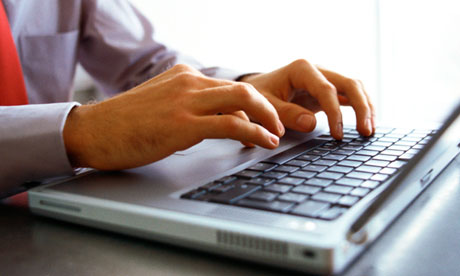10 Tips On How To Write a Professional Email at Work
Opening your email inbox can be like opening a Pandora’s box of inadequate grammar, poor spelling and bad taste. Follow these 10 tips to ensure your emails are professional.
1. Use a clear, direct subject line. People often decide whether to open an email based on the subject line. Make sure your subject lines informs the audience of the content of your email.
2. Write a short and concise message. The long e-mail is a thing of the past. Write concisely, with lots of white space, so as to not overwhelm the recipient. Feel free to use bullet points. Proofread all your messages and don’t rely on spell-checkers only.
3. Use a professional email address and signature. You should have an email address that conveys your name so that the recipient knows exactly who is sending the email. Never use email addresses that are not appropriate for use in the workplace, such as babygirl@…. Always include a signature. You never want someone to have to look up how to get in touch with you. If you’re social media savvy, include all of your social media information in your signature as well.
4. Think twice before hitting “reply all”. Refrain from hitting “reply all” unless you really think everyone on the list needs to receive the reply. Check your default settings – no one wants to read emails from 20 people that have nothing to do with them. Ignoring the emails can be difficult, with many people getting notifications of new messages on their smartphones or distracting pop-up messages on their computer screens.
5. Use exclamation points sparingly. The maximum number of exclamation points in a business e-mail? One. Otherwise, you risk looking childish and unprofessional.
6. Be careful with confidential information. Refrain from discussing confidential information in e-mails such as someone’s tax information or the particulars of a highly-sensitive business deal. Should the e-mail get into the wrong person’s hands, you could face serious – even legal – repercussions.
7. Be cautious with humour. Without the right tone or facial expressions, it is difficult to interpret a joke correctly. It’s better to leave humour out of emails unless you know the recipient well. Something perceived as funny when spoken may come across very differently when written.
8. Don’t e-mail angry. Because e-mail can seem so informal, many people send a quick irritated reply or a angry message. So before you hit the ALL CAPS button and start shouting, always remember that e-mail correspondence lasts forever.
9. Mind the attachments. Sending unannounced large attachments can clog the receiver’s inbox and cause other important e-mails to bounce. If you are sending something that is over 500KB, senders should ask, ‘Would you mind if I sent you an attachment? When would be the best time for you?’ Refrain from sending a message with more than two attachments. Also, give the attached file a logical name.
10. Respond in a timely fashion. Acknowledge receipt of the email with a quick reply. If you need more time to attend to the question in the email, send a response to explain that you will attend to the matter in the next 3 days or so. Depending on the nature of the e-mail and the sender, responding within 24 to 48 hours is acceptable.


